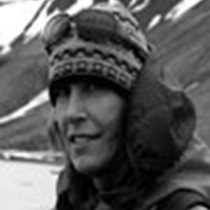Pavlof Harbor
What a day! This morning, the peaks and vistas of Southeast Alaska opened to us under clear skies. Mountains we had only supposed to loom above the forested hills we’d been cruising by all week were, indeed, confirmed to exist. After a morning spent scouting the waters of Freshwater Bay and Tenakee Inlet for humpback whales (pleasurably, but it turns out, in vain), we anchored in Pavlof Harbor and set off to explore.
Kayakers poked into the river coming down from Pavlof Lake falls, drifted over broccoli-like white sea anemones wafting in the rising tide, and were buzzed by a bald eagle hunting fish to bring back to its young, which were heard calling from a nest in the trees. Hikers stepped into the cool forest trails. There, some took their time among the plants, and others clambered up beyond the falls to the Pavlof Lake, finding bear and beaver tracks, grasses taller than some of the younger hikers, frogs and leeches, and gorgeous bog plants like the marsh cinquefoil pictured above.
After lunch, we cruised through Chatham Strait and found the whales that had earlier eluded us. Twelve or so humpbacks were spread out over a wide expanse of water, and we drifted among them in the sunshine, listening to their huge breath, laughing at the tail-lobbing antics of a youngster. As we turned the ship to begin our passage toward Sitka and the end of our time aboard the Sea Lion, a humpback breached twice, flinging its entire body into the air, spinning water from the tips of its fins. It was a spectacular sendoff for an amazing trip…. But then there was more!
After William Lopez-Forment’s lecture on Russian America, as we were turning from Chatham Strait into Peril Strait, folks on the bridge and the bow spotted a group of humpback whales that seemed to be in suspicious proximity to one another. Sure enough, once we got to Morris Reef, we had a chance to see an amazing sight: ten big humpback whales lunging up through a patch of water in tight formation, taking a few breaths, then diving en mass. Cooperative feeding.
We lowered the hydrophone to hear what was going on out of sight, and could distinguish at least two and perhaps three individual voices keening through the water, increasing in intensity until just before the entire group surfaced, mouths agape, ventral pleats ballooning out, fins and flukes waving in the air. This happened again and again – with the sounds shifting slightly – allowing us to begin to imagine what the surface of the ocean keeps from view. Perhaps this is a fitting last wonder for Alaska, as time in these waters allows us glimpses of the depth and wildness of this place, increasing not so much our familiarity as our awe.
What a day! This morning, the peaks and vistas of Southeast Alaska opened to us under clear skies. Mountains we had only supposed to loom above the forested hills we’d been cruising by all week were, indeed, confirmed to exist. After a morning spent scouting the waters of Freshwater Bay and Tenakee Inlet for humpback whales (pleasurably, but it turns out, in vain), we anchored in Pavlof Harbor and set off to explore.
Kayakers poked into the river coming down from Pavlof Lake falls, drifted over broccoli-like white sea anemones wafting in the rising tide, and were buzzed by a bald eagle hunting fish to bring back to its young, which were heard calling from a nest in the trees. Hikers stepped into the cool forest trails. There, some took their time among the plants, and others clambered up beyond the falls to the Pavlof Lake, finding bear and beaver tracks, grasses taller than some of the younger hikers, frogs and leeches, and gorgeous bog plants like the marsh cinquefoil pictured above.
After lunch, we cruised through Chatham Strait and found the whales that had earlier eluded us. Twelve or so humpbacks were spread out over a wide expanse of water, and we drifted among them in the sunshine, listening to their huge breath, laughing at the tail-lobbing antics of a youngster. As we turned the ship to begin our passage toward Sitka and the end of our time aboard the Sea Lion, a humpback breached twice, flinging its entire body into the air, spinning water from the tips of its fins. It was a spectacular sendoff for an amazing trip…. But then there was more!
After William Lopez-Forment’s lecture on Russian America, as we were turning from Chatham Strait into Peril Strait, folks on the bridge and the bow spotted a group of humpback whales that seemed to be in suspicious proximity to one another. Sure enough, once we got to Morris Reef, we had a chance to see an amazing sight: ten big humpback whales lunging up through a patch of water in tight formation, taking a few breaths, then diving en mass. Cooperative feeding.
We lowered the hydrophone to hear what was going on out of sight, and could distinguish at least two and perhaps three individual voices keening through the water, increasing in intensity until just before the entire group surfaced, mouths agape, ventral pleats ballooning out, fins and flukes waving in the air. This happened again and again – with the sounds shifting slightly – allowing us to begin to imagine what the surface of the ocean keeps from view. Perhaps this is a fitting last wonder for Alaska, as time in these waters allows us glimpses of the depth and wildness of this place, increasing not so much our familiarity as our awe.




